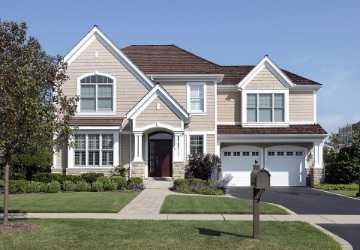The Growth Of Single-Family Rentals In The Real Estate Market
Author: Tooba
The real estate market has always been dynamic, influenced by numerous factors like economic trends, social shifts, and policy changes. One of the most notable developments in recent years is the significant rise of single-family rentals (SFRs). These are detached homes rented by individuals, institutions, or real estate companies. Once considered a niche segment, single-family rentals have increased and are integral to the housing market landscape.
Changing Housing Preferences
The traditional view of the "American Dream" was centred around homeownership for decades. A house with a white picket fence symbolized stability, prosperity, and success. However, the narrative around homeownership has started to shift. The millennial generation, now entering their prime home-buying years, approaches housing differently than previous generations. Several reasons explain why renting has become a more appealing option:
Financial Constraints Of Homeownership
The cost of homeownership has risen dramatically, making it less accessible for many. The price of a single-family home, combined with rising interest rates and the need for a down payment, has pushed homeownership out of reach for many young adults and families. Additionally, many people are burdened with student loan debt, which limits their ability to save for a home. Renting a single-family home offers an alternative that provides more space, privacy, and flexibility without the high upfront costs associated with buying a home.

Economies Of Scale And Professionalized Management
Institutional investors benefit from economies of scale, allowing them to manage large rental properties more efficiently than small landlords. They can invest in better property management, streamline maintenance processes, and offer tenants a more professional rental experience. This has contributed to the appeal of SFRs as a stable, long-term investment for these institutions while also providing a more consistent and reliable option for renters.
Build-To-Rent Communities
A relatively new trend in the SFR market is the development of "build-to-rent" communities. These are neighborhoods designed and constructed solely to rent homes rather than sell them. Investors and developers are increasingly creating entire communities where all the homes are rentals. These neighborhoods often offer amenities similar to those found in apartment complexes, such as shared parks, pools, and community centres, but with the space and privacy of a detached home. Build-to-rent communities cater to renters who prefer the suburban lifestyle but need more time to be ready or able to purchase a home.

Shifts In Homeownership Rates
As the rental market grows, homeownership rates in the U.S. have plateaued or even declined in some areas. Several factors contribute to this shift, reinforcing the demand for single-family rentals:
Rising Home Prices
One of the most significant barriers to homeownership is the rising cost of housing. Over the last decade, home prices in many markets have surged faster than wages, making it increasingly difficult for middle-income and first-time buyers to enter. This has driven more people toward renting as they struggle to save for a down payment or qualify for mortgages in a competitive market. Single-family rentals offer an attractive option for those who want the experience of living in a house but can't afford to buy one.
Demographic Trends
The U.S. is experiencing demographic shifts influencing the demand for SFRs. Millennials, the largest group of homebuyers, are getting married and starting families later than previous generations. This delay in life milestones means many choose to rent longer before buying a home. Additionally, ageing baby boomers are downsizing or selling their homes, opting to rent for the convenience and flexibility it offers in retirement. The growing number of both young renters and older retirees is contributing to the demand for single-family rentals.

Economic And Market Impact
The rise of single-family rentals has reshaped the housing market and had broader economic implications.
Supply And Demand Pressures
As demand for single-family rentals has increased, so too have rental prices. In many cities, the cost of renting a house has risen significantly, sometimes outpacing the cost of renting an apartment. This has led to concerns about affordability, particularly as wages have yet to keep pace with housing costs. While institutional investors argue that they are helping to meet the demand for rental housing, critics suggest that their large-scale purchasing of homes may be driving up prices and reducing the availability of affordable homes.
Investment Opportunities
For investors, single-family rentals have become an attractive asset class. The consistent demand for rental housing and rising rents offer a steady income stream and the potential for property value appreciation. Real estate investment trusts (REITs) focused on SFRs have grown in popularity, providing retail investors access to this market. As institutional investors continue pouring money into SFRs, the sector will likely remain a key focus within real estate investment portfolios.

The Future Of Single-Family Rentals
The growth of the single-family rental market shows no signs of slowing down in 2024. As demographic trends, economic factors, and evolving preferences continue to shape the housing market, single-family rentals will remain a vital component of the real estate landscape.
Policy Responses And Regulation
As the SFR market grows, policymakers will likely examine the sector more closely. In some cities, there have already been calls for regulations to ensure that institutional investors do not have an outsized impact on the housing market. Rent control measures, zoning changes, and incentives for homeownership could become more prominent as governments look for ways to balance the needs of renters and buyers alike.
Sustainability And The Environmental Impact
With the rise of build-to-rent communities and large-scale management of rental properties, there are opportunities to incorporate sustainable practices into the SFR market. Energy-efficient homes, green building materials, and sustainable community planning can reduce the environmental impact of these developments. As more renters prioritize eco-friendly living, developers and investors may increasingly focus on sustainability as a selling point for their rental properties.

Conclusion
The growth of single-family rentals is profoundly reshaping the real estate market. Driven by changing housing preferences, economic factors, and the influence of institutional investors, the SFR sector has become a critical part of the housing landscape. As more people opt for the flexibility of renting, particularly in suburban settings, the demand for single-family homes will likely remain strong. With its continued expansion, the SFR market presents opportunities and challenges for investors, policymakers, and renters alike.



